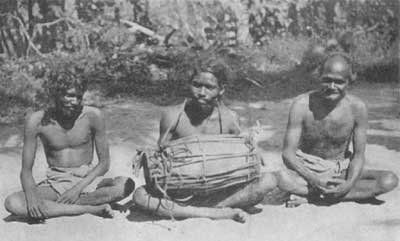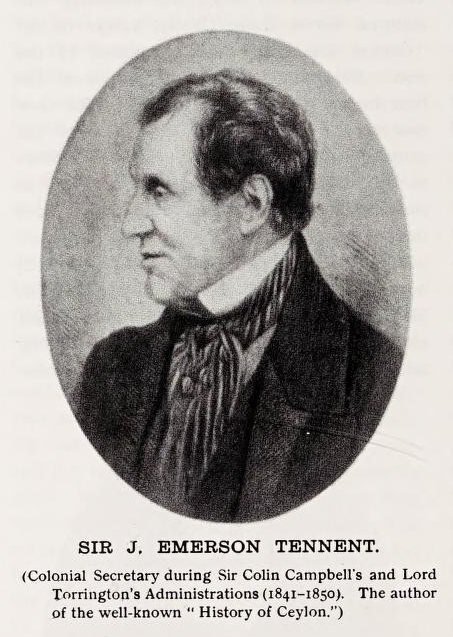|
Coast Veddas
The Coast Veddas (, ), by self-designation, form a social group within the minority Sri Lankan Tamil ethnic group of the Eastern province of Sri Lanka. They are primarily found in small coastal villages from the eastern township of Trincomalee to Batticalao. Nevertheless, they also inhabit a few villages south of Batticalao as well. They make a living by fishing, slash and burn agriculture, paddy cultivation of rice, basket weaving for market and occasional wage labor. Anthropologists consider them to be partly descended from the indigenous Vedda people, as well as local Tamils. Residents of the Eastern province consider their Vedar (Tamil for "hunter") neighbors to have been part of the local social structure from earliest times, whereas some Vedar elders believe that their ancestors may have migrated from the interior at some time in the past. They speak a dialect of Sri Lankan Tamil that is used in the region. During religious festivals, people who enter a trance or spirit ... [...More Info...] [...Related Items...] OR: [Wikipedia] [Google] [Baidu] |
Coast Veddas Of Vakarai
The coast, also known as the coastline or seashore, is defined as the area where land meets the ocean, or as a line that forms the boundary between the land and the coastline. The Earth has around of coastline. Coasts are important zones in natural ecosystems, often home to a wide range of biodiversity. On land, they harbor important ecosystems such as freshwater or estuarine wetlands, which are important for bird populations and other terrestrial animals. In wave-protected areas they harbor saltmarshes, mangroves or seagrasses, all of which can provide nursery habitat for finfish, shellfish, and other aquatic species. Rocky shores are usually found along exposed coasts and provide habitat for a wide range of sessile animals (e.g. mussels, starfish, barnacles) and various kinds of seaweeds. Along tropical coasts with clear, nutrient-poor water, coral reefs can often be found between depths of . According to a United Nations atlas, 44% of all people live within 5 km (3.3mi) ... [...More Info...] [...Related Items...] OR: [Wikipedia] [Google] [Baidu] |
Dialect
The term dialect (from Latin , , from the Ancient Greek word , 'discourse', from , 'through' and , 'I speak') can refer to either of two distinctly different types of linguistic phenomena: One usage refers to a variety of a language that is a characteristic of a particular group of the language's speakers. Under this definition, the dialects or varieties of a particular language are closely related and, despite their differences, are most often largely mutually intelligible, especially if close to one another on the dialect continuum. The term is applied most often to regional speech patterns, but a dialect may also be defined by other factors, such as social class or ethnicity. A dialect that is associated with a particular social class can be termed a sociolect, a dialect that is associated with a particular ethnic group can be termed an ethnolect, and a geographical/regional dialect may be termed a regiolectWolfram, Walt and Schilling, Natalie. 2016. ''American Engli ... [...More Info...] [...Related Items...] OR: [Wikipedia] [Google] [Baidu] |
Charles Gabriel Seligman
Charles Gabriel Seligman FRS FRAI (24 December 1873 – 19 September 1940) was a British physician and ethnologist. His main ethnographic work described the culture of the Vedda people of Sri Lanka and the Shilluk people of the Sudan. He was a professor at London School of Economics and was highly influential as the teacher of such notable anthropologists as Bronisław Malinowski, E. E. Evans-Pritchard and Meyer Fortes all of whose work overshadowed his own. Seligman's work promoted scientific racism and he was a proponent of the Hamitic hypothesis, according to which, some civilizations of Africa were thought to have been founded by Caucasoid Hamitic peoples. Since the 1960s the Hamitic hypothesis, along with other theories of "race science", has become entirely discredited in science. Life Seligman was born into a middle class Jewish family in London, the son of wine merchant Hermann Seligmann (Charles shortened his name to Seligman after 1914). He studied medicine at ... [...More Info...] [...Related Items...] OR: [Wikipedia] [Google] [Baidu] |
James Emerson Tennent
Sir James Emerson Tennent, 1st Baronet, FRS (born James Emerson; 7 April 1804 – 6 March 1869) was a British politician and traveller born in Ireland. He was elected a Fellow of the Royal Society on 5 June 1862. Life The third son of William Emerson, a merchant of Belfast, and Sarah, daughter of William Arbuthnot of Rockville (or Rockvale), County Down, he was born there in 1804. He was educated at the Belfast Academy and Trinity College, Dublin, of which he afterwards became LL.D. He took up the cause of Greek independence, and travelled in Greece, publishing a ''Picture of Greece'' (1826), ''Letters from the Aegean'' (1829), and a ''History of Modern Greece'' (1830); and he was called to the English bar at Lincoln's Inn in 1831. In that year he married Letitia, daughter and co-heiress (with her cousin, Robert James Tennent, M.P. for Belfast, 1848–52) of William Tennent, a wealthy merchant at Belfast, who died of cholera in 1832, and he adopted by royal licence the nam ... [...More Info...] [...Related Items...] OR: [Wikipedia] [Google] [Baidu] |
Caste
Caste is a form of social stratification characterised by endogamy, hereditary transmission of a style of life which often includes an occupation, ritual status in a hierarchy, and customary social interaction and exclusion based on cultural notions of purity and pollution. * Quote: "caste ort., casta=basket ranked groups based on heredity within rigid systems of social stratification, especially those that constitute Hindu India. Some scholars, in fact, deny that true caste systems are found outside India. The caste is a closed group whose members are severely restricted in their choice of occupation and degree of social participation. Marriage outside the caste is prohibited. Social status is determined by the caste of one's birth and may only rarely be transcended." * Quote: "caste, any of the ranked, hereditary, endogamous social groups, often linked with occupation, that together constitute traditional societies in South Asia, particularly among Hindus in India. Althou ... [...More Info...] [...Related Items...] OR: [Wikipedia] [Google] [Baidu] |
Ancestor Worship
The veneration of the dead, including one's ancestors, is based on love and respect for the deceased. In some cultures, it is related to beliefs that the dead have a continued existence, and may possess the ability to influence the fortune of the living. Some groups venerate their direct, familial ancestors. Certain sects and religions, in particular the Eastern Orthodox Church and Roman Catholic Church, venerate saints as intercessors with God; the latter also believes in prayer for departed souls in Purgatory. Other religious groups, however, consider veneration of the dead to be idolatry and a sin. In European, Asian, Oceanian, African and Afro-diasporic cultures, the goal of ancestor veneration is to ensure the ancestors' continued well-being and positive disposition towards the living, and sometimes to ask for special favours or assistance. The social or non-religious function of ancestor veneration is to cultivate kinship values, such as filial piety, family lo ... [...More Info...] [...Related Items...] OR: [Wikipedia] [Google] [Baidu] |
Mariamman
Mariamman, often abbreviated to Amman, is a Hindu goddess of rain, predominantly venerated in the rural areas of South India. Her festivals are held during the late summer/early autumn season of Ādi throughout Tamil Nadu and the Deccan region, the largest being the ''Ādi Thiruviḻa''. Her worship mainly focuses on bringing rains and curing diseases like cholera, smallpox, and chicken pox. Mariamman is worshipped in accordance with local traditions such as ''Pidari'' or the '' Gramadevatai.'' She is considered as a guardian deity (kaval deivam) by many South Indian village-dwellers. Origin Mariamman's worship originated in the traditions of Dravidian folk religion, the faith practised by the inhabitants of the south before its syncretism with Vedic Hinduism. She is the main Tamil mother goddess, predominantly venerated in the rural areas of South India. Mariamman has since been associated with Hindu goddesses like Parvati, Kali, Durga,"The truthful Kali who guarded the hom ... [...More Info...] [...Related Items...] OR: [Wikipedia] [Google] [Baidu] |
Ganesha
Ganesha ( sa, गणेश, ), also known as Ganapati, Vinayaka, and Pillaiyar, is one of the best-known and most worshipped Deva_(Hinduism), deities in the Hindu deities, Hindu pantheon and is the Supreme God in Ganapatya sect. His image is found throughout India. Hindu denominations worship him regardless of affiliations. Devotion to Ganesha is widely diffused and extends Ganesha in world religions, to Jains and Buddhists and includes Nepal, Sri Lanka, Thailand, Indonesia (Java and Bali), Singapore, Malaysia, Philippines, and Bangladesh and in countries with large ethnic Indian populations including Fiji, Guyana, Mauritius, and Trinidad and Tobago. Although Ganesha has many attributes, he is readily identified by his Asiatic Elephant, elephant head. He is widely revered, more specifically, as the remover of obstacles and thought to bring good luck; the patron of The arts, arts and Science, sciences; and the Deva (Hinduism), deva of intellect and wisdom. As the god of beginn ... [...More Info...] [...Related Items...] OR: [Wikipedia] [Google] [Baidu] |
Murugan
Kartikeya ( sa, कार्त्तिकेय, Kārttikeya), also known as Skanda, Subrahmanya, Shanmukha (), and Murugan ( ta, முருகன்), is the Hindu god of war. He is the son of Parvati and Shiva, the brother of Ganesha and a god whose legends have many versions in Hinduism. Kartikeya has been an important deity in the Indian subcontinent since ancient times, worshipped as Mahasena and Kumara in North India and is predominantly worshipped in the state of Tamil Nadu and other parts of South India, Sri Lanka, Singapore, and Malaysia as Murugan. Murugan is widely regarded as the "God of the Tamil people". It has been postulated that the Tamil deity of Murugan was syncretised with the Vedic deity of Subrahmanya following the Sangam era. Both Muruga and Subrahmanya refer to Kartikeya. The iconography of Kartikeya varies significantly; he is typically represented as an ever-youthful man, riding or near an Indian peafowl, called Paravani, bearing a vel and ... [...More Info...] [...Related Items...] OR: [Wikipedia] [Google] [Baidu] |
Village Deities Of Tamils Of Sri Lanka
A village is a clustered human settlement or community, larger than a hamlet but smaller than a town (although the word is often used to describe both hamlets and smaller towns), with a population typically ranging from a few hundred to a few thousand. Though villages are often located in rural areas, the term urban village is also applied to certain urban neighborhoods. Villages are normally permanent, with fixed dwellings; however, transient villages can occur. Further, the dwellings of a village are fairly close to one another, not scattered broadly over the landscape, as a dispersed settlement. In the past, villages were a usual form of community for societies that practice subsistence agriculture, and also for some non-agricultural societies. In Great Britain, a hamlet earned the right to be called a village when it built a church. [...More Info...] [...Related Items...] OR: [Wikipedia] [Google] [Baidu] |
Saivites
Shaivism (; sa, शैवसम्प्रदायः, Śaivasampradāyaḥ) is one of the major Hindu traditions, which worships Shiva as the Supreme Being. One of the largest Hindu denominations, it incorporates many sub-traditions ranging from devotional dualistic theism such as Shaiva Siddhanta to yoga-orientated monistic non-theism such as Kashmiri Shaivism.Ganesh Tagare (2002), The Pratyabhijñā Philosophy, Motilal Banarsidass, , pages 16–19 It considers both the Vedas and the Agama texts as important sources of theology.Mariasusai Dhavamony (1999), Hindu Spirituality, Gregorian University and Biblical Press, , pages 31–34 with footnotesMark Dyczkowski (1989), The Canon of the Śaivāgama, Motilal Banarsidass, , pages 43–44 Shaivism developed as an amalgam of pre-Vedic religions and traditions derived from the southern Tamil Shaiva Siddhanta traditions and philosophies, which were assimilated in the non-Vedic Shiva-tradition. In the process of Sanskritisation ... [...More Info...] [...Related Items...] OR: [Wikipedia] [Google] [Baidu] |








